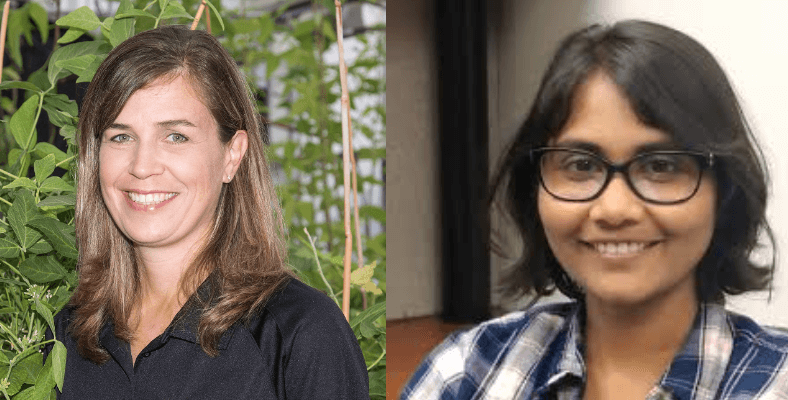.png)
Plant-parasitic nematodes cause billions of dollars in annual yield losses and represent a major impediment to meeting the challenge of feeding an ever-growing global population.
One plant-parasitic nematode, the soybean cyst nematode (SCN), has been a long-standing focus of research and innovation in the Melissa G. Mitchum Lab at the University of Georgia College of Agricultural and Environmental Sciences (CAES).
SCN, a microscopic roundworm that attacks the root of soybean crops, leads to stunted plants, poorly developed root systems and decreased yields for producers. Recently, these losses have been exacerbated by a shift in the severity of this pathogen due to the overuse of known resistance genes. In addition, farmers have limited options available to control these losses with improved cultivars or new management strategies beyond using seed treatments for early season protection.
For the past four years, a team of scientists from Mitchum’s lab, the University of Missouri and the U.S. Department of Agriculture have been devoted to discovering a new gene to combat SCN and improve the profitability and productivity of farmers worldwide. Recently, this research has led to the discovery of a new gene, GmSNAP02, for use among soybean breeders, farmers and private industry. The study was published last week in Nature Communications.
The interdisciplinary research team was led by Mitchum, professor in the CAES Department of Plant Pathology and UGA’s Institute of Plant Breeding, Genetics, and Genomics (IPBGG), and Andrew Scaboo, assistant professor in the Division of Plant Science and Technology at the University of Missouri. Using unique bi-parental populations, the research team employed advanced techniques to map, fine-map, and select GmSNAP02 as a candidate gene. To further validate their findings, the team utilized CRISPR-Cas9 genome editing technology and observed a gain of resistance in edited plants. The team also unraveled the answers to the effectiveness of different gene combinations while stacked with the GmSNAP02 gene and developed molecular assays for gene detection.

“Here we used CRISPR-Cas9 technology as a more precise way to confirm GmSNAP02 function in soybean resistance to SCN,” said Vinavi Gamage, a doctoral candidate at IBPGG and co-first author of the study. “What’s exciting is that our discovery has not only identified a new resistance gene but a gene editing-amenable resistance gene, opening the door for CRISPR-Cas9 technology that may make it easier and potentially faster for breeders to develop soybean cultivars with enhanced resistance to SCN.”
“Moreover, the nature of this resistance gene has provided us with new insights about how SCN may be adapting to overcome genetic resistance mechanisms in the soybean plant,” Mitchum said. “A better understanding of how SCN circumvents the soybean plant’s resistance response is necessary for enhancing the durability of resistance genes by providing soybean farmers with more prescriptive management approaches.”
With increasing nematode resistance to the commonly used SCN resistance source PI 88788, the discovery of GmSNAP02 offers new hope for combating the destructive pest and improving soybean productivity, benefitting producers and consumers.
The work conducted at UGA was supported in part by a grant from the joint National Science Foundation-National Institute of Food and Agriculture Plant BioticInteractions Program.
Learn more about ongoing SCN research in the Mitchum Lab at site.caes.uga.edu/mitchumlab.






